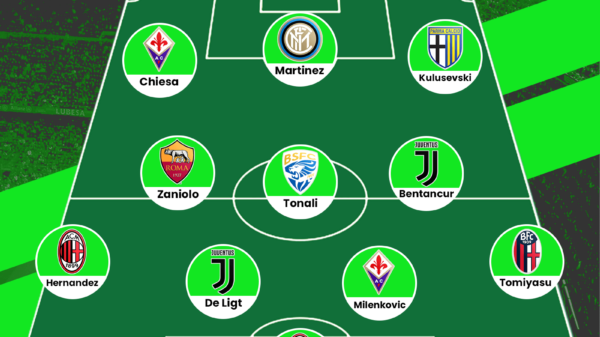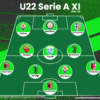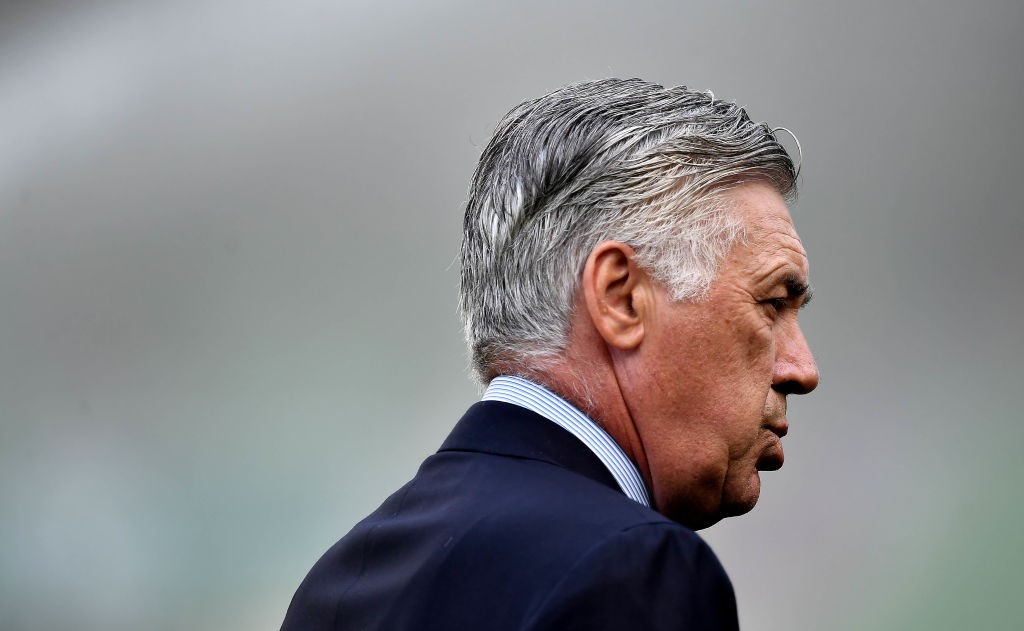Sunday saw one of the most important matches in European and world football, the Derby d’Italia, which pitted at the Giuseppe Meazza Internazionale Milano of Roberto Mancini who arrived in second place in Serie A and Juventus of Massimiliano Allegri, who have not had a good start this season and in this game looked to raise their performance.
The Nerazzurri lined up in a 4-4-2 system, with two central midfielders (Medel and Melo) who would lend aid to the defense if necessary. Two wingers lined up alongside two forwards, one central (Icardi) and one withdrawn in Jovetic, who replaced Palacio. La Vecchia Signora Allegri showed an offensive scheme, with a recovery zone and armed with a midfield of five players, playing with a 3-5-2, alternating in the defensive phase to 4-4-2 if necessary. In this shape, one of his midfielders dropped deep to assist the three defenders and thus form a center line of 4 men. In attack 2 wings and 2 strikers formed the front of attack.
Inter Milan 0-0 Juventus
Inter (4-4-2):

The yellow zone covered by Medel or Melo to close the space in front of the defense.
Juventus (3-5-2):
Line ups
Inter: 1. Handanovic; 21. Santon; 25. Miranda; 24. Murillo; 5. Juan; 17. Medel (7. Kondogbia); 83. Melo (13. Guarin); 77. Brozovic; 10. Jovetic (8. Palacio); 44. Perisic; 9. Icardi.
Juventus: 1. Buffon; 15. Barzagli; 19. Bonucci; 3. Chiellini; 16. Cuadrado; 6. Khedira; 8. Marchisio; 10. Pogba; 33. Evra; 7. Zaza (21. Dybala); 9. Morata (17. Mandzukic).
Inter’s high pressure game
In the first half, Inter were more aggressive with progress in blocks without major disorganization, with lateral projections, alternating movements collectively finding fast triangulations and side overflow. They were defensively well organized with 4 men, more defensive midfielders who joined in reducing space, but also applied strong pressure with their forwards and wingers thwarting the short game of Juve from their own goal.

The 4 defenders with good organization and the 4 midfielders ensure that the play ends with a long pass.
For their part Juventus were compact, alternating 3 defenders with 4, a zonal defense which was not pressed in the rival camp. The only pressure was applied by the frontline between zone 2 and 3, considering that the field is divided into 4 equal areas. Juventus’ game plan was to remain compact with fast counterattacks based on long passes, looking for their wingers and trying to find their center-forwards mainly Morata.
Inter’s dominance in the first half was based on the rapid recovery and control of the visitor’s counterattacks, with Marchisio as a defensive midfielder, and withdrawal of the Turin team, coupled with a great work on the defensive links. The retreat of the midfielders helped defensively but Inter could not translate their dominance in possession into a tangible advantage in terms of goals.
Juventus’ defensive security, speed and verticality in attack.
In the second half the plans changed. Juventus advanced their lines in search of more offensive depth, based primarily on long balls, vertical passes and diagonals into the wings in search of Morata or Zaza. They transformed the midfield into a transition zone, without losing the tactical order. Their attack was based on rapid transitions, in order to try and take advantage of badly positioned Inter defenders, a tactic which never bore fruit.
The Internazionale defence further reinforced their numbers by the virtue of their defensive midfielders, who often took the role of the 5th man in defense, thus reducing space between lines and defending zone with pressure in zone 3. Except individual maneuvers of their wings, especially Cuadrado, Juventus could not disturb Inter´s defensive organization. With the movement of both forwards, Morata and Zaza (Mandzukic and Dybala over the 90), crashing against the wall of blue and black, mostly offensive maneuvers ended in crosses launched by Cuadrado as well as by Evra.
Inter attacked the wings at every opportunity with Perisic and Brozovic often seeking the participation of Jovetic and his strike partner Icardi, who was well marked by the defense of Juventus. They also tried adding Melo to the offense construction, Juan Jesus Santon for the laterals, and screenings of Medel. But there was no penetration in the attack, except for sporadic times where they arrived by individual plays or turnover in possession. It was undoubtedly a great game in terms of defensive schemes, but with few ideas at the time of attack. Both the few were primarily based on long passes and crosses from wide.
Heat maps to see the targeting of the game action
Conclusion
It was definitely a game without drama, balanced not only in terms of the score but in the statistics with 50% of possession for each side. The draw is a fair result for both teams who were very well organized defensively but with big gaps when it came to their offensive game. The first half belonged to Inter, without dominating completely, they managed to eke out the better chances.
The second half was the opposite, it was Juventus who tried to play more offensively, without threatening the goal but with the intention to give a little more in attack. Alex Telles did not feature for Inter could had given greater penetration to the attack like Pereyra at Juventus, who probably would have given more weight to the offensive side. Inter will try to improve their game in the attacking third and make full use of the good strikers at their disposal. For Juventus, they’ve had a poor start to the campaign and will be looking to get things back on track sooner rather than later.
Written by Nicolas Pernigotti
- Tactical Analysis: Juventus 2-2 Bayern Munich | Allegri’s 4-4-2 and critical change of pace in second half - February 29, 2016
- Tactical Analysis: Monchengladbach 1-3 Dortmund | Effective counter attacks work for Dortmund - January 28, 2016
- Tactical Analysis: River Plate 0-3 Barcelona | Barca’s enterprising play too much for River - December 28, 2015


































































